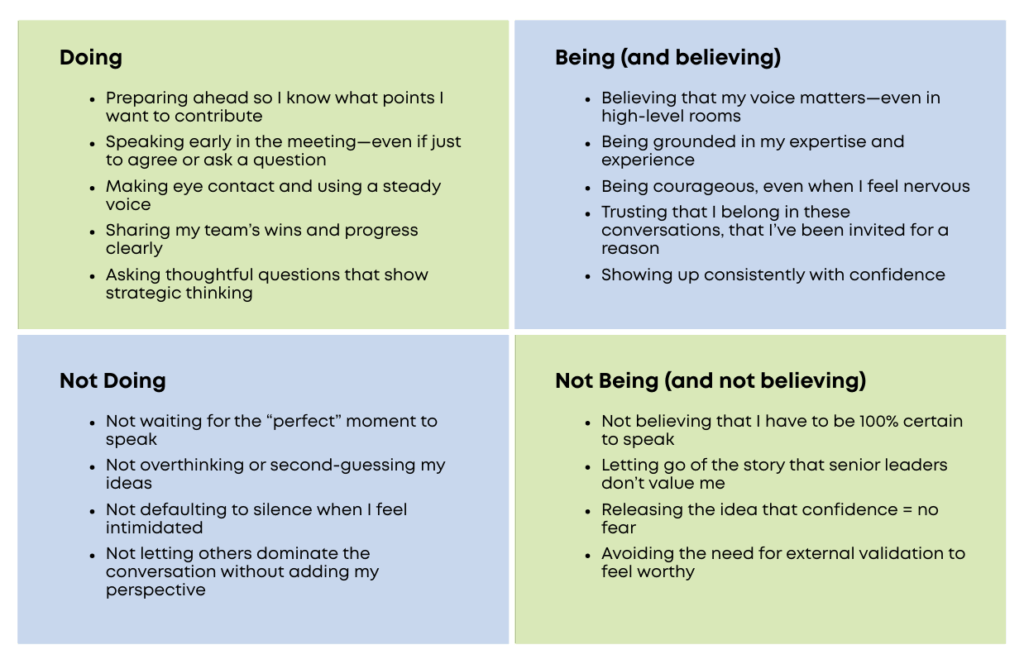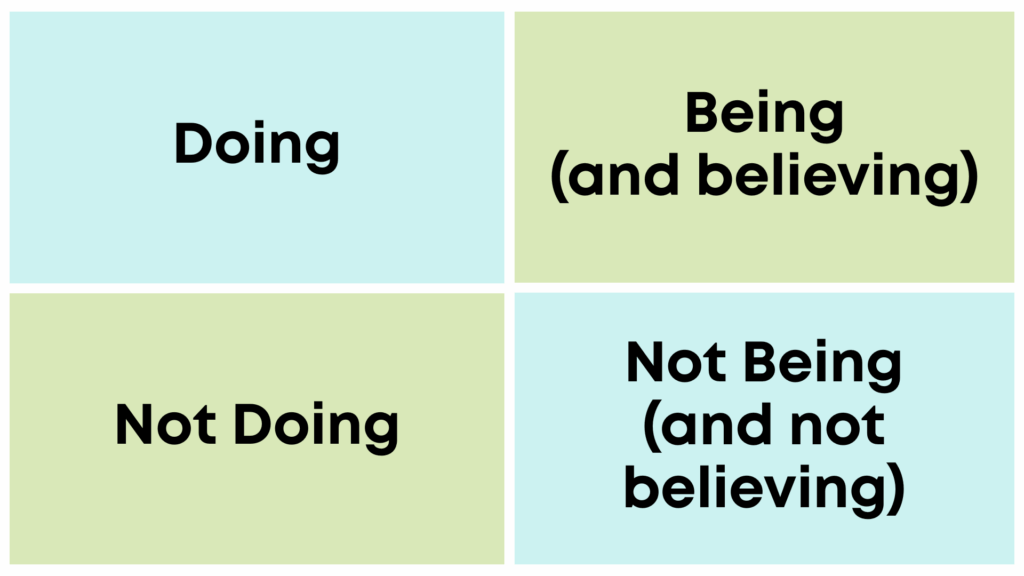Which One is Holding You Back?
What truly makes a good leader?
When most people think about leadership, they picture the visible responsibilities: giving feedback, leading meetings, making decisions, managing conflict…
But that’s just the outer game of leadership—the actions others can see.
If you are trying to improve your leadership skills, it’s common to focus on these actions. You start to figure out what you need to do more of, or do less of, or start doing, or quit doing.
Pretty soon, all you focus on is what you need to do.
But what if you switched the focus to how you want to be?
Every action is driven by thoughts and emotions, which make up your inner game. This is what really matters!
The Foundation of Leadership: Focusing on the Inner Game
I once had a client, Regina, who was consistently being overlooked by her seniors.
With her team, she was confident and competent. But when she stepped into meetings with senior leaders, she froze. She struggled to find her voice, and missed every opportunity to shine.
Eventually, her silence cost her more than just recognition. She lost a promotion to a more outspoken co-worker—which sparked a strong desire to finally overcome her challenge.
Regina and I worked together to get clear on a concrete goal:
“I will speak up with confidence so I can make a bigger impact for myself, my team, and my company.”
But how?
What we didn’t do was just create a laundry list of actions.
Regina already knew the actions she needed to take: speak early, make eye contact, share her team’s wins, and ask strategic questions. It wasn’t a lack of knowledge that was holding her back.
What held her back were the invisible beliefs beneath the surface. “I have to be 100% certain to speak.” “Senior leaders don’t value me.” “I need external validation before I can feel confident.”
Regina’s outer game was just fine. It was her inner game that needed work, so that’s where we started.
Addressing the Inner Game: Being vs Doing Grid
To help leaders like Regina bridge the gap between intention and action, I use a simple but powerful tool: the Being/Doing Grid.
This is a 2×2 framework that maps out four categories:
- Doing – the visible actions you commit to
- Not Doing – the actions you want to stop or avoid
- Being – the beliefs and mindsets you want to embrace
- Not Being – the beliefs and mindsets you want to release
Take a look at Regina’s grid:
GOAL: I will speak up with confidence so I can make a bigger impact for myself, my team, and my company.
I WILL REACH THE GOAL BY:

This grid helped her see not just what she needed to do, but who she needed to be.
Regina began putting this grid into action the very next week. She started showing up consistently and taking the actions she had committed to. But more importantly, she also started releasing her old mindsets and embracing what she had written in the “Being” quadrant.
Senior leaders began to take notice. And several months later, Regina got that promotion she wanted!
Putting It Into Practice
You can create your own Being/Doing Grid for any leadership goal you’re working toward.
Simply draw the grid on a piece of paper, then follow these 6 steps:
- Set a goal. Make it specific and purposeful. For example, Regina’s goal was “I want to speak up with confidence so I can make a bigger impact for myself, my team, and my company.”
- List the DOING. What are the clear, observable actions that move you toward your goal?
- List the NOT DOING. What are the behaviors or habits that are holding you back?
- List the BEING. What beliefs, intentions, or inner states do you want to embody?
- List the NOT BEING. What limiting beliefs or stories need to be released?
- Make it actionable. Stash a copy of your grid in the back of your notebook so you can reference it at important moments. Reflect on it weekly. Set reminders to hold yourself accountable. Let it be your compass when things feel uncertain. Just filling out the grid and setting it aside will not bring about any change, so make sure you are putting it into action.
If you’re only focused on doing, your leadership will eventually hit a wall. Actions might become inconsistent. Results may feel flat or unsatisfying. You’ll start wondering why “doing all the right things” isn’t working.
That’s because great leadership doesn’t start with the outer game. It starts with the inner game. And the sooner you start unraveling your limiting beliefs and mindsets, the sooner you can start moving forward.

